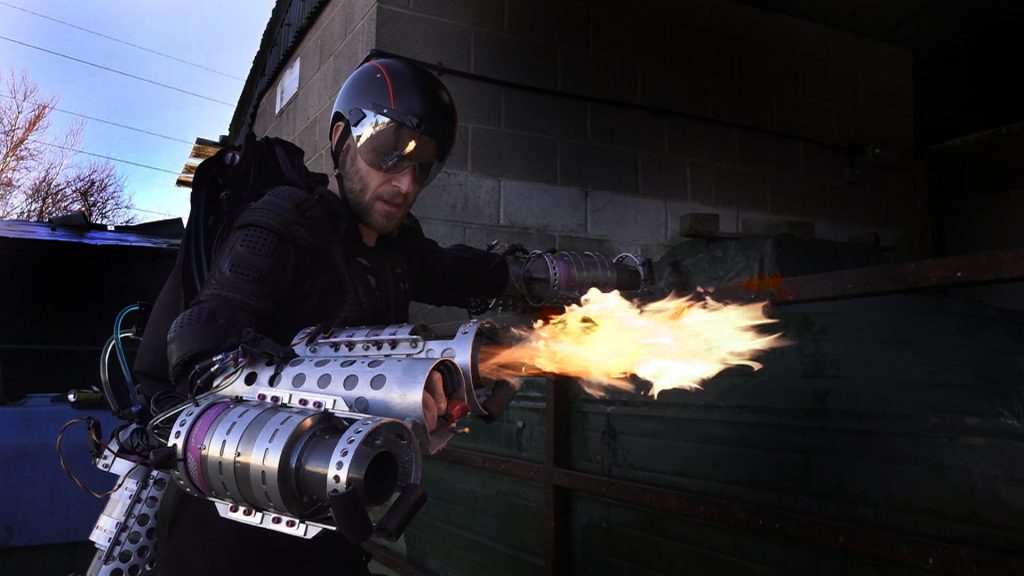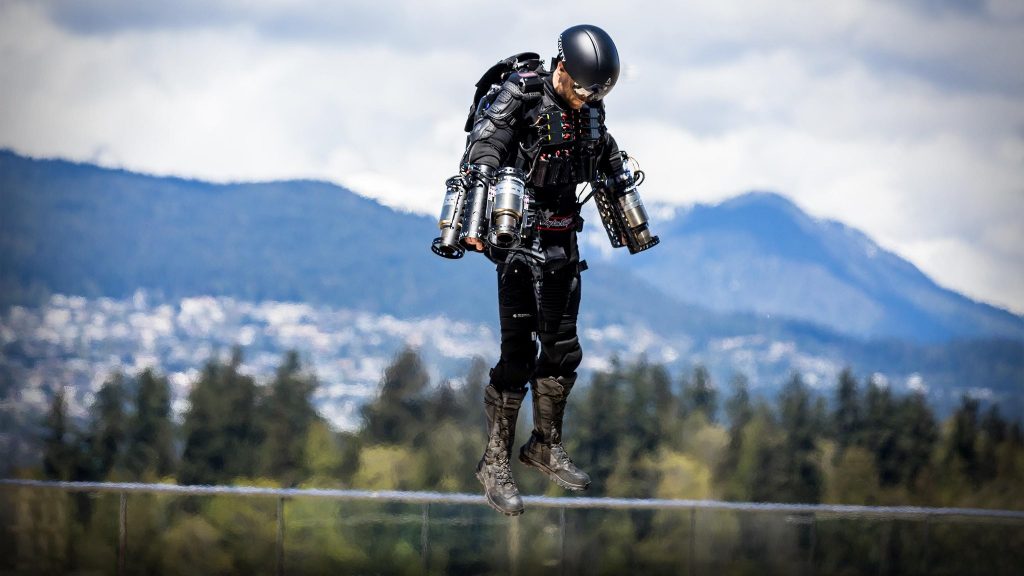As the co-founder of technology startup Gravity, Richard Browning is known as the real life Iron Man.
Together with a dedicated team in the UK, Browning has invented and patented a jet engine powered flying suit, designed to “re-imagine manned flight.”
In the latest update – this time from San Diego’s Comic-Con – Browning speaks to Tested’s Adam Savage, revealing plans to take the suit to the next level with metal 3D printing and wings.
We have lift off! Richard Browning flies at Comic-Con San Diego. Clip via Tested on YouTube.
700 degrees of engine power
The Gravity jet engine powered flying suit consists of four arm-loaded thrusters, and an additional jet pack strapped to the wearers back. The jet-pack pilot also carries the fuel in a backpack. Each two engine arm configuration weighs up to 90 lbs, and can reach temperatures of 700°C (1292°F).

Though each of the rockets reach such incredibly high temperatures, the heat is quickly dispersed by the air, avoiding the risk of boots/trainers catching fire in liftoff.
Speaking to Savage Browning explains that control of the suit is done very intuitively, by minor movements of the arms that determine direction and height by alteration of the jet’s vector.
In order to monitor the performance a DAQRI augmented reality (AR) helmet with a heads-up display is used. This provides real-time readings of speed and altitude, without the pilot needing to check a wrist-mounted reading – which would obviously be problematic.
80 kilometers per hour in the right lane
The suit flown by Browning at San Diego Comic-Con, is the product of a number of iterations continually put in place by him and the team.
In a grass test of the suit, Browning was able to fly at a speed up to around 45/50 mph (72/80 km/h).

At the moment there are around 7 or 8 different streams in development for both the functionality and appearance of the suit.
“We are working on a whole bunch of adaptations with the manufacturer,” says Browning “to make [the engines] much more fit for what we’re now using them for, because clearly they weren’t designed for this.”
Field test of the Gravity suit. Clip via Gravity Industries on YouTube
3D printers are also part of the development. The next iteration will feature temperature proof, one-piece, aluminium housing for the thrusters. “I’m quite excited about that,” says Browning, “we’ve fully CADed up a beautiful, organic inspired housing, and that’s being 3D printed now.”
Giving wings to human flight
Since changing the engine configuration, the control modules are in need of improvements. The next generation suit will also see the addition of wings to take flight from vertical to airfoil.

For inspiration, the Gravity team could certainly look to some recent 3D printing projects for the next stage of design. The technology has been at the forefront of low-cost, bespoke engine production in a number of private space exploration projects including Aerojet RocketDyne’s RL-10 vehicle.
Missed this year’s Comic-Con? Check out our 3D printing events page to stay up to date.
All the latest 3D printing news stories can be delivered to your inbox if you sign up to our newsletter here. Social media more your thing? Follow us on Twitter and like us on Facebook.
Featured image: Richard Browning is the real life iron man. Photo via Gravity.co



